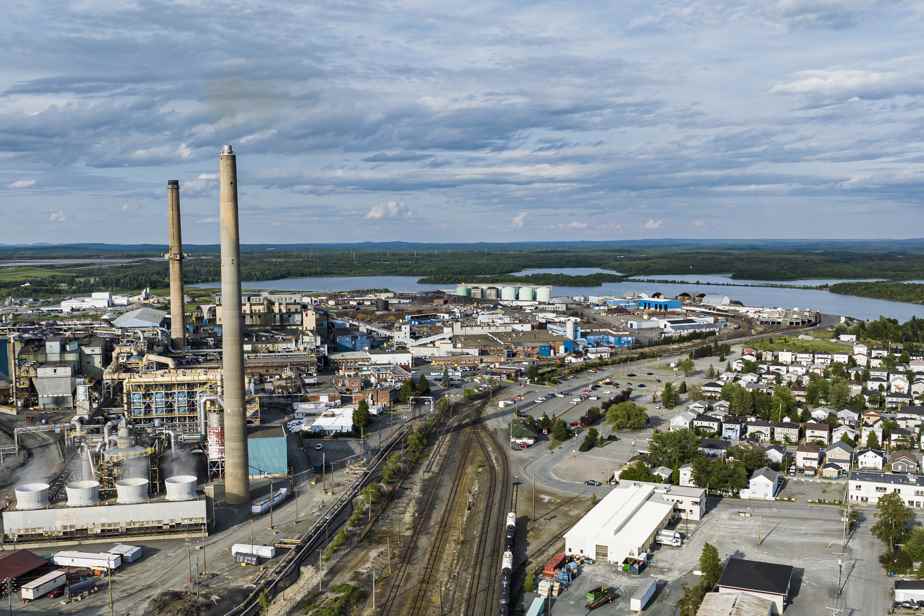The Horne Foundry in Rouyn-Noranda tries to prevent the disclosure of documents indicating the contaminant content of the materials it receives from its suppliers, documents which have nevertheless been made public in the past.
Posted at 5:00 a.m.
Updated at 7:16 a.m.
The Quebec Access to Information Commission (CAI) will hear on Tuesday the case of a citizen who has been trying for two years to obtain data on the tonnages of concentrate deliveries to the Horne Foundry, as well as their arsenic concentration, bismuth, antimony, lead, cadmium and mercury.
Marc Nantel, who is an activist within the Regroupement Vigilance Mines de l’Abitibi-Témiscamingue (REVIMAT), had requested this information from the Ministry of the Environment and the Fight against Climate Change (MELCC) in June 2020, for the year 2019.
The Horne Foundry, where the documents come from, had partially redacted them, despite the MELCC’s desire to send them to the plaintiff.
However, this same type of data had been disclosed by the MELCC for previous years.
This information demonstrated that “the majority of the arsenic [rejeté dans l’air est] attributable to a minority of customers”, reported Radio-Canada in 2019, in a report on the subject.
We learned that for the year 2018, 63% of the arsenic received at the Horne Smelter was attributable to only 4 of its 46 suppliers, even if the tonnage from these suppliers represented only 5% of the total inputs.
The situation was similar for the years 2017 and 2016.
After the refusal of the Horne Foundry to disclose the data for the year 2019, the MELCC nevertheless made public those for the year 2020.
In particular, we learn that one of the Foundry’s suppliers delivered 2,246 tonnes of materials with an arsenic concentration of 19.7%.
Marc Nantel then returned to the charge in 2022, requesting data for the year 2021; the decision of the CAI on his first request will therefore have an impact on the second.
Transparency
The dispute is of importance that goes beyond the Horne Foundry case, says environmental lawyer Rodrigue Turgeon, who represents Marc Nantel before the CAI.

PHOTO PROVIDED BY RODRIGUE TURGEON
Me Rodrigue Turgeon, lawyer specializing in environmental law
“What is at issue is public access to information concerning the control of atmospheric emissions from large polluting industries,” he said in an interview with The Press.
We realize that what enters the factories has a direct impact on the emissions generated by these companies. The era of mining secrets is a thing of the past.
Me Rodrigue Turgeon, lawyer
If Marc Nantel wins his case, the decision will set a precedent and will facilitate the disclosure of this type of information for all other polluting companies, believes the lawyer, who is also co-spokesperson for the coalition Pour que le Québec look better.
“It’s a matter of transparency,” he says. To maintain public trust, information that is considered to be public must be. »
Business Defense
The multinational Glencore, owner of the Horne Foundry, says it wants to “protect only one page out of a 21-page document”, pointed out to The Press his spokesperson, Alexis Segal.
This data is confidential because it identifies our customers, which would give our competitors a significant competitive advantage.
Alexis Segal, spokesperson for Glencore
However, the names of the foundry’s customers do not appear in the documents for the years 2016, 2017, 2018 and 2020 which have been made public.
The MELCC did not want to answer questions from The Press “out of respect for the process in progress” before the Commission for access to information, indicated its spokesperson, Sophie Gauthier.
Learn more
-
- 630,500 tons
- Quantity of inputs received in 2020 by the Horne Foundry, from 44 suppliers
source: Ministry of the Environment and the Fight against Climate Change

